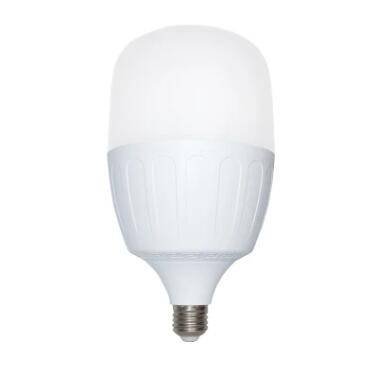Painting with Light: Exploring the Impact of Color Temperature in LED Bulb Lighting
2023-11-28
Introduction:
In the world of lighting design, the color temperature of bulbs plays a pivotal role in shaping the ambiance of a space. LED (Light Emitting Diode) bulbs, known for their versatility, offer a spectrum of color temperatures that can significantly influence the mood, aesthetics, and functionality of an environment. In this blog, we'll delve into how the color temperature of LED bulbs affects the lighting ambiance, unraveling the interplay between warmth and coolness in the art of illuminating spaces.
Understanding Color Temperature:
Color temperature is a characteristic of light that describes the color appearance of a light source measured in Kelvins (K). It is often categorized into warm and cool tones, with lower Kelvins representing warmer, yellowish hues, and higher Kelvins indicating cooler, bluish tones.
1. Warm White (2700K-3000K): Inviting Comfort and Coziness:
- LED bulbs with warm white color temperatures exude a cozy and inviting ambiance reminiscent of traditional incandescent bulbs.
- Ideal for residential spaces, restaurants, and bedrooms, warm white tones create a relaxed and intimate atmosphere, promoting comfort and a sense of warmth.
2. Neutral White (3500K-4000K): Balancing Warmth and Brightness:
- Neutral white LED bulbs strike a balance between warm and cool tones, offering a more versatile lighting option.
- Suitable for kitchens, offices, and workspaces, neutral white lighting enhances visibility and fosters a clean, modern aesthetic without appearing overly stark or clinical.
3. Cool White (5000K-6500K): Brightness and Focus:
- LED bulbs with cool white color temperatures emit a bright and crisp light that is conducive to focus and productivity.
- Often used in task lighting for offices, workshops, and retail spaces, cool white tones provide clarity and can simulate natural daylight, promoting alertness and concentration.
Impact on Lighting Ambiance:
1. Residential Spaces:
- The choice of color temperature in residential lighting can transform the mood of different areas. Warm white tones in living rooms and bedrooms create a welcoming and relaxed atmosphere, while neutral white may be preferred in kitchens for a clean and well-lit environment.
2. Commercial and Retail Settings:
- In commercial and retail spaces, the color temperature of LED bulbs can influence the customer experience. Cool white lighting in retail spaces can enhance product visibility and focus, while warm white tones in restaurants create a comfortable dining ambiance.
3. Workspaces:
- In offices and workspaces, the color temperature of LED lighting is crucial for promoting productivity. Neutral white lighting provides a balanced and energizing environment, helping employees stay focused and alert during tasks.
4. Art and Display Lighting:
- Color temperature is particularly important in art galleries and display areas. The choice between warm and cool tones can highlight or alter the appearance of artwork, artifacts, or products, influencing the viewer's perception.
5. Outdoor Lighting:
- In outdoor lighting, the color temperature of LED bulbs contributes to the ambiance of the surroundings. Warm white tones are often preferred for residential outdoor spaces, creating a welcoming and serene atmosphere, while cool white lighting may be used for security and visibility in commercial outdoor areas.
Conclusion:
The color temperature of LED bulbs is a powerful tool in the hands of lighting designers and homeowners alike, allowing for the creation of diverse atmospheres to suit different spaces and purposes. By understanding the impact of color temperature, individuals can tailor the lighting ambiance to enhance comfort, focus, or aesthetics, creating environments that cater to the specific needs and preferences of those who inhabit them. The art of lighting design, as facilitated by the versatility of LED bulbs, continues to evolve, offering a spectrum of possibilities to paint with light and shape the visual and emotional experience of spaces.



